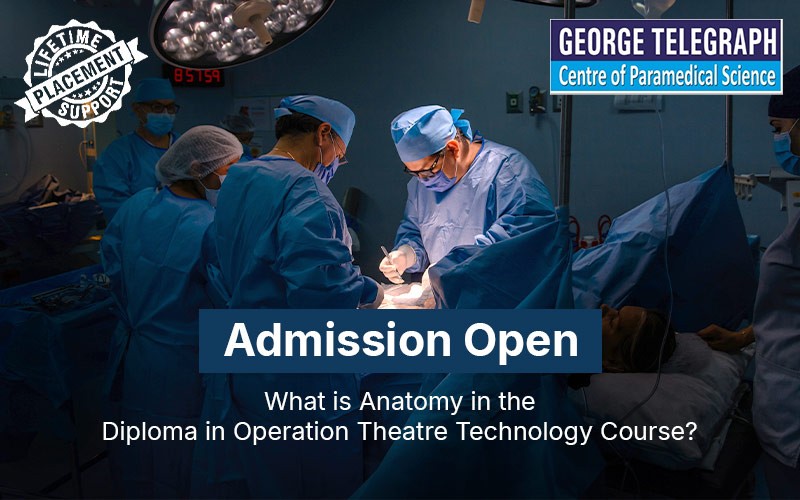What is Anatomy in the Diploma in Operation Theatre Technology Course

Anatomy is a key part of the diploma in operation theatre technology course. This course taught at George Telegraph Training Institute trains students to work in surgical environments. Knowing about the human body is crucial for these professionals to help during surgeries, manage tools, and keep the operating room safe and efficient.
Anatomy is the study of the structure of living things. For humans, it involves learning about bones, muscles, organs, tissues, and cells. This knowledge is important for anyone in the medical field because it helps them understand how the body works, diagnose illnesses, and perform medical procedures.
Why is Anatomy Important in Operation Theatre Technology?
- Helping Surgeons: Technicians need to understand the human body to help surgeons effectively. Knowing where different parts of the body are helps them handle tools and assist with surgeries.
- Choosing the Right Tools: Different surgical tools are used for different parts of the body. Knowing anatomy helps technicians pick and prepare the right tools for each surgery.
- Keeping Patients Safe: Understanding anatomy is crucial for patient safety. Technicians need to know which parts of the body to avoid during procedures to prevent harm.
- Preparing for Surgery: Technicians prepare the operating room before surgeries. This includes positioning patients correctly, which requires knowing the body's landmarks to ensure comfort and access for surgeons.
- Preventing Infections: Knowledge of anatomy helps in properly sterilizing tools and the operating environment, reducing the risk of infections.
What Do Students Learn in Anatomy for DOTT?
The anatomy curriculum in a DOTT course usually includes:
- Gross Anatomy: This is the study of body parts and organs that can be seen without a microscope. Students learn about the major systems of the body, such as bones, muscles, and organs.
- Microscopic Anatomy (Histology): This involves studying the structure of tissues and cells under a microscope. It helps technicians understand how tissues are organized and function.
- Embryology: This branch focuses on the development of the body from conception to birth. It helps in understanding birth defects and their surgical implications.
- Surface Anatomy: This involves identifying anatomical landmarks on the body's surface, which is important for procedures like inserting needles and guiding surgeries.
- Radiographic Anatomy: Students learn to read medical images like X-rays, CT scans, and MRIs, which is crucial for planning surgeries and understanding internal structures.
How is Anatomy Taught in DOTT Courses?
Anatomy is taught using both theoretical and practical methods:
- Lectures and Textbooks: These provide basic knowledge about the human body, covering all major systems and structures in a diploma in operation theatre technology course.
- Dissection: Some courses offer cadaver dissections for hands-on experience with real anatomical structures.
- 3D Models and Simulations: Technology like 3D models and virtual simulations helps students understand complex anatomical relationships.
- Medical Imaging: Training includes reading radiographs and other images to identify and understand body structures in living patients.
Conclusion
Anatomy is a vital part of the Diploma in Operation Theatre Technology course at George Telegraph Training Institute. It equips students with the knowledge and skills needed to work effectively in surgical settings. Understanding human anatomy helps technicians ensure high standards of patient care, safety, and efficiency in the operating room. This knowledge supports their technical duties and enhances their ability to work with surgeons and other medical professionals.